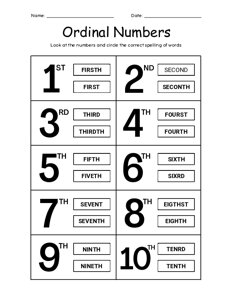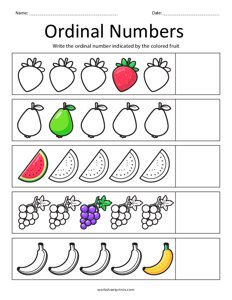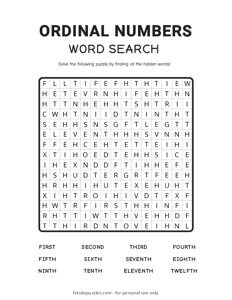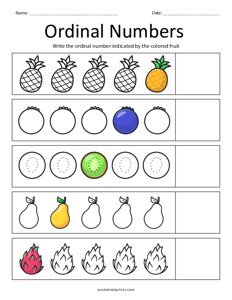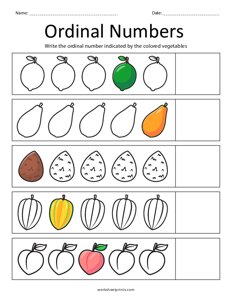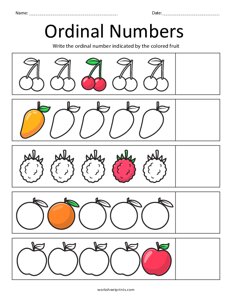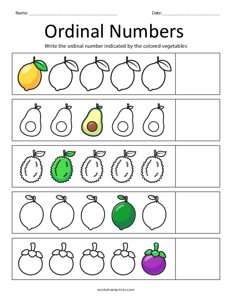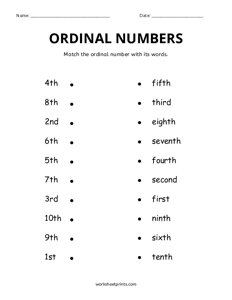Ordinal Numbers
Help children understand the order or sequence of objects, events, or positions, essential for developing their mathematical and critical thinking skills.
Ordinal Number Spelling
Ordinal Numbers #1
Ordinal Number Word Search
Ordinal Numbers #3
Ordinal Numbers #5
Ordinal Numbers #2
Ordinal Numbers #4
Match the Ordinal Numbers
Through various activities such as coloring, matching, and counting, kids will grasp the concepts of first, second, third, and so on in a playful and intuitive manner.
Parents, teachers, and educators can easily access and download these worksheets, making them ideal for use in classrooms, homeschooling environments, or as supplemental learning materials at home.
By providing hands-on practice with ordinal numbers, our worksheets empower young learners to build a strong foundation in mathematics while fostering their enthusiasm for learning.
What are Ordinal Numbers?
Ordinal numbers are a type of number used to indicate the position or order of elements in a sequence. Unlike cardinal numbers, which represent quantity or amount (e.g., one, two, three), ordinal numbers denote the position of an object, person, or event in relation to others within a series.
For example, in the sequence "first, second, third," the words "first," "second," and "third" are ordinal numbers that indicate the order or rank of items. Ordinal numbers are often used to describe the rank of contestants in a race, the order of items in a list, the position of months in a year, or the sequence of events in a story.
In written form, ordinal numbers are typically represented by adding a suffix to the cardinal number. For example, "first" is formed by adding "-st" to "one," "second" by adding "-nd" to "two," and "third" by adding "-rd" to "three." However, there are some irregular forms, such as "fourth," "fifth," and "ninth," which do not follow this pattern.
Ordinal numbers are essential for describing the order or sequence of elements in various contexts, and they play a crucial role in language, mathematics, and everyday communication.

